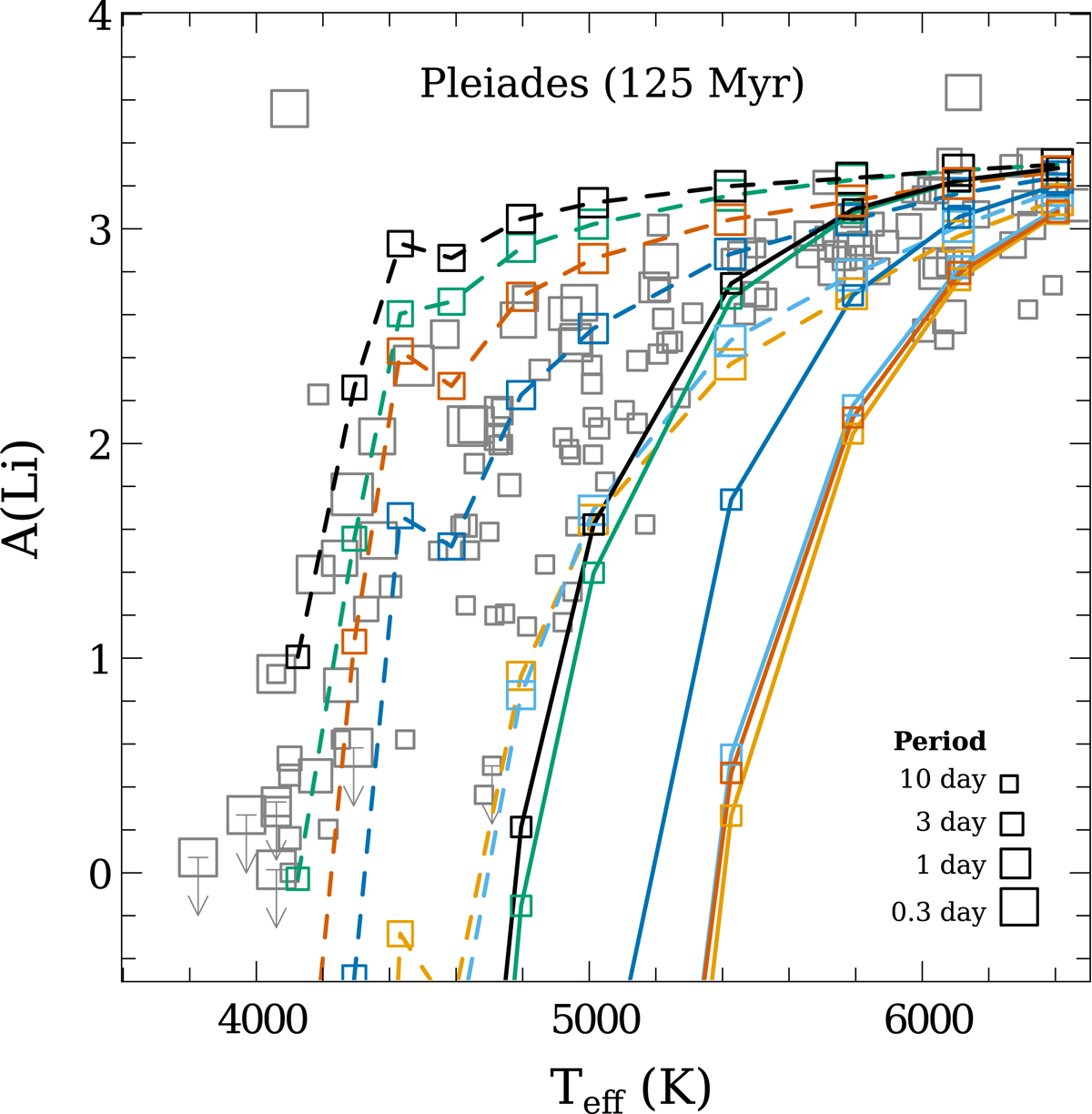Fig. 4.

Download original image
Comparison between observations and theoretical predictions of lithium and rotation in the Pleiades. Observational data are denoted by grey markers and are taken from Bouvier et al. (2016), where the rotational periods are from Rebull et al. (2016) and lithium abundances are from Barrado et al. (2016). Marker size is proportional to the logarithm of the rotation frequency. Theoretical models are fast (dashed lines) and slow (solid lines) rotators with the modified stability criterion and six different treatments of mixing near convective boundaries, which are denoted by the same line colours as in Fig. 3.
Current usage metrics show cumulative count of Article Views (full-text article views including HTML views, PDF and ePub downloads, according to the available data) and Abstracts Views on Vision4Press platform.
Data correspond to usage on the plateform after 2015. The current usage metrics is available 48-96 hours after online publication and is updated daily on week days.
Initial download of the metrics may take a while.


